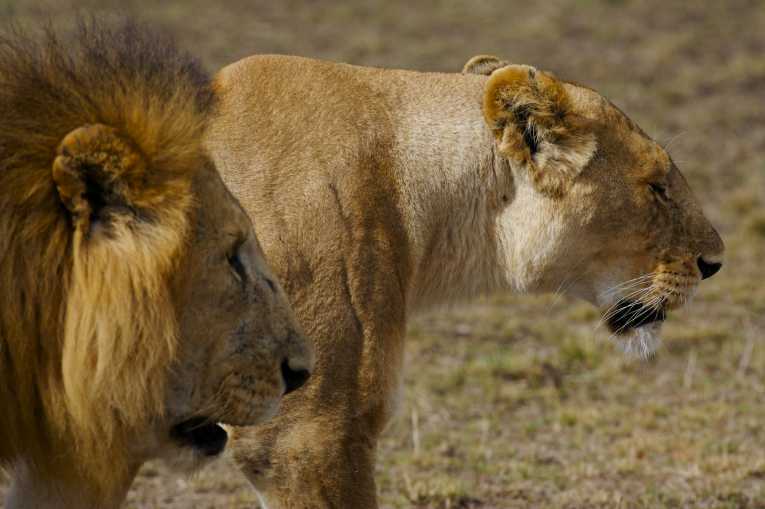Remarkable differences between lions in West and Central Africa and lions in East and southern Africa have been unveiled by a team of researchers from the Netherlands.
According to the study, which is published in the Journal of Biogeography, marked genetic differences are shown by lions in these regions.
By analysing mitochondrial DNA of lions from all over Africa and from India, including sequences from extinct lions, such as the Atlas lion in Morocco, the researchers were able to identify that lions from West and Central Africa were, surprisingly, more related to lions from the Asiatic subspecies than they were to their East and southern African neighbours.
The new DNA evidence gives weight to previous observations which suggested that lions in West and Central Africa are smaller and lighter than lions in East and southern Africa, with smaller manes, smaller group sizes and smaller prey. They may also differ in the shape of their skull.
Several theories may explain the astonishing difference between the African populations.
Firstly, natural structures, such as the Central African rain forest and the Rift Valley, are thought to form barriers for lion dispersal. These effectively prevent different populations from overlapping extensively, and partially explain the distinction between lions from the west and centre, and lions from the east and south.
Secondly, the climatological history of West and Central Africa may be a key factor in explaining the unique genetic position of the lion population in this part of the continent.
It is thought that between 40,000 to 8,000 years ago, a local extinction of the population in this region may have occurred, followed by periods of severe drought. This would have led lions to range into Asia and the Middle East. The researchers hypothesise that the most likely course of events is that lions living in areas close to India will have then recolonised West and Central Africa, thereby explaining the close genetic relationship observed between lions from these two areas.
Less than 10% of the estimated lion population, around 1,700 lions, are found in West and Central Africa. These remaining individuals are under grave threat from fragmentation and destruction of their natural habitat, as well as declining prey availability. Increasing conflict with humans is compounding their decline.
Currently, lions from the West and Central Africa region are categorised as 'Regionally Endangered', according to the IUCN.










